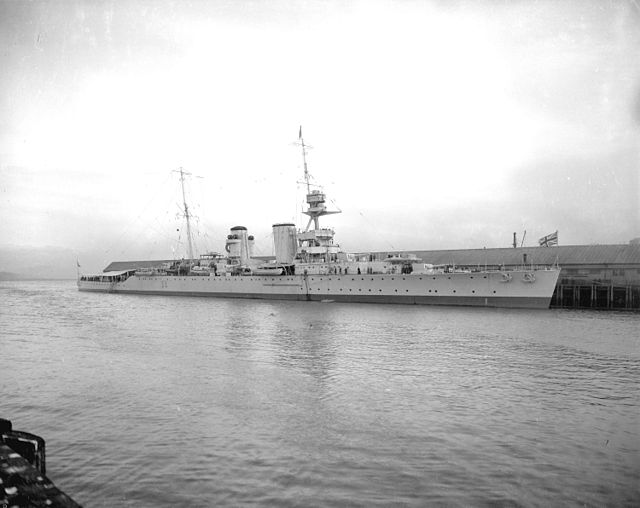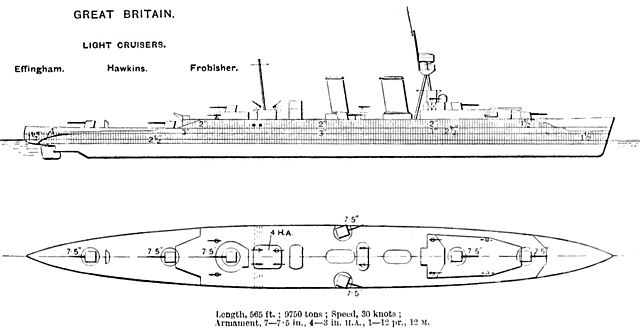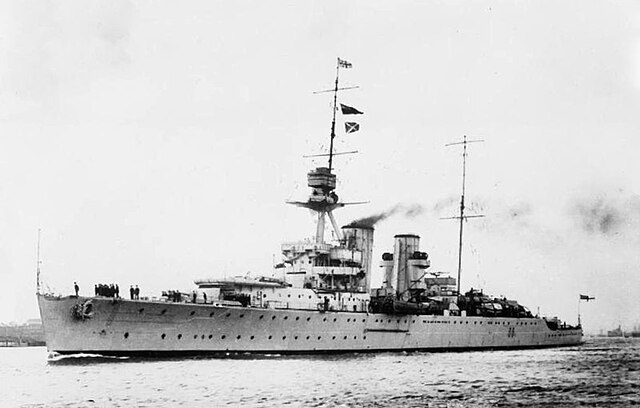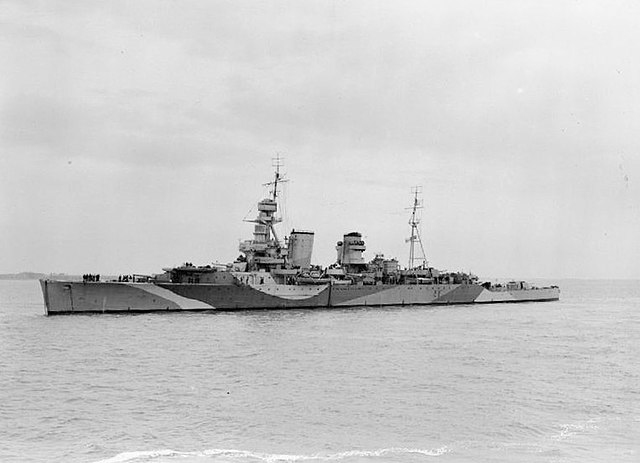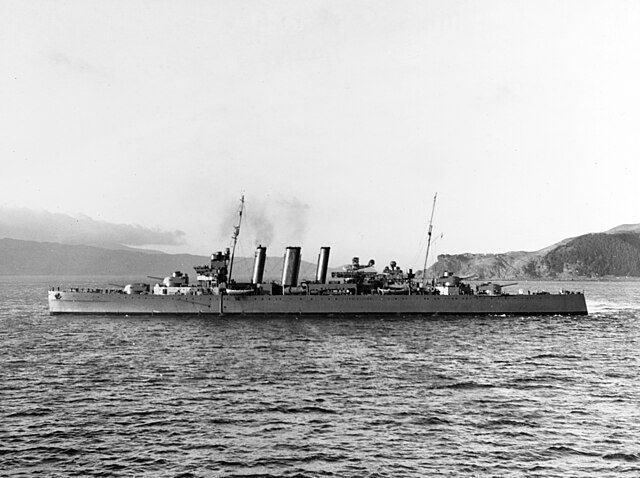The Hawkins class consisted of five heavy cruisers built for the Royal Navy during the First World War, although none of them saw service during the war. The first ship to be completed, HMS Vindictive, was renamed from HMS Cavendish and converted into an aircraft carrier while under construction. All ships were named after Elizabethan sea captains. The three ships remaining as cruisers in 1939 served in the Second World War, with Effingham being an early war loss through wreck; Raleigh had been lost in a similar shipwreck on uncharted rocks in 1922. Vindictive, though no longer a cruiser, also served throughout the War. This class formed the basis for the definition of the maximum cruiser type under the Washington Naval Treaty of 1922.
Raleigh in Vancouver, Canada, December 1921
Right elevation and deck plan as depicted in Brassey's Naval Annual 1923
Hawkins in a dry dock, 1920–1935
Vindictive shortly after completion
A heavy cruiser was a type of cruiser, a naval warship designed for long range and high speed, armed generally with naval guns of roughly 203 mm (8 inches) in calibre, whose design parameters were dictated by the Washington Naval Treaty of 1922 and the London Naval Treaty of 1930. Heavy cruisers were generally larger, more heavily-armed and more heavily-armoured than light cruisers while being smaller, faster, and more lightly-armed and armoured than battlecruisers and battleships. Heavy cruisers were assigned a variety of roles ranging from commerce raiding to serving as 'cruiser-killers,' i.e. hunting and destroying similarly-sized ships
HMS Frobisher, a Hawkins-class cruiser around which the Washington Naval Treaty limits for heavy cruisers were written.
Armoured cruiser USS Tennessee, armed with four 10-inch (250 mm) guns, ca. 1907
HMS Hawkins, lead ship of her class.
HMAS Canberra, a County-class "treaty cruiser".

